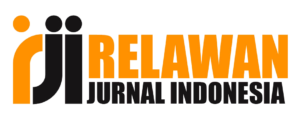The Development of Problem Based Learning Canva-Assisted Teaching Materials to Improve Mathematical Probem Solving Ability on Integer
DOI:
https://doi.org/10.22460/jiml.v7i2.20127Keywords:
Mathematical Problem Solving Ability, Problem Based Learning, Teaching Materials, Canva, IntegerAbstract
This study aims to define the process of developing educational materials in the form of workbooks for students across the entire document using a Canva-supported problem-based learning approach to determine the feasibility of educational materials developed, determine the effectiveness of the educational materials developed, and identify limitations. encountered by researchers during development. instructional materials, collect data on teaching materials, learning objectives to be achieved, and media used by students to date. The study also asked for information on whether school facilities support the learning process. The type of research used is research and development (R&D) with a 4D development model (Define, Design, Develop, Dissemination). The selected study site was MT Nurul Hidayah Batujajar. Due to the evolution of the educational material, especially in limited testing, the correct result is 89% with the most likely interprnal material is 83% with the interpretations very realistic and in extensive testing the confirmatory result is 91% with most likely interpretations, the actual result of the teaching material 86% with very realistic interpretations. The results of this study show that the process of developing teaching aids is well conducted. This study can be used as a reference for further studies as this study meets the very feasibility criteria.
References
Amaliyah, A., Mahardhika, G., Lubis, N. S., & Hothimah, R.H. (2022). ANALYSIS OF STUDENTS' KNOWLEDGE ABOUT COUNTING NUMBERS WITH NUMBERS. Berajah Diary:Journal of the Science of Personal Learning and Development, 2(2), 361-366.
Eliza, F. (2013). Development of interactive multimedia teaching materials for electrical drawing courses in Autocad within the framework of the electrical engineering study program, FT UNP. Journal of Information Technology and Education, 6(2), 63-89.
Glover, D. (2006). A set of math encyclopedias from A-Z for children.
Hudoyo, H. (1990). Strategies for teaching and learning mathematics. Poor: IKIP Malang.
Hasmori, AA (2011). Education, curriculum and society. Journal d'Edupres, 1, 3.
Lasmiyati, L., & Treasure, I. (2014). Develop learning modules to enhance understanding of SMP concepts and interests. Pythagorean: Journal of Mathematics and Mathematical Education, 9(2), 161–174. https://doi.org/10.21831/pg.v9i2.9077
Marwah, S.S., Syafe'i, M., & Sumarna, E. (2018). Relevance of the concept of education according to Ki Hadjar Dewantara with Islamic education. TARBAWY: Indonesian Journal of Islamic Education, 5(1), 14. https://doi.org/10.17509/t.v5i1.13336
Nike, I. (2019). Pengembangan Lembar Kegiatan Peserta Didik Berbasis IT Pada Pembelajaran Tematik Kelas III Sekolah Dasar Tema Benda di Sekitarku
Nose, R. E., & Faiza, D. (2019). Canva as a learning medium in basic electrical and electronics subjects. Voteteknika (Professional Electronic and Computer Engineering), 7(2), 79. https://doi.org/10.24036/voteteknika.v7i2.104261
O’connell, S. (2007). Introduction to problem solving. Portsmouth: Heinemann.
Puspandari, I., Praja, E. S., & Muhtarulloh, F. (2019). Developing teaching materials according to the inductive method to improve mathematical representation capacity for secondary school students. Mosharafa: Journal of Mathematical Education, 8(2), 307–318. https://doi.org/10.31980/mosharafa.v8i2.460
Permatasari, BI (2018). Differences in math problem solving ability of 8th graders
SMPN 8 Balikpapan on attitudes and gender. PPM National Workshop, 255–261.
Rahmasari, E.A., & Yogananti, A. F. (2021). Canva app usability study (design student user case study). ANDHARUPA: Journal of Visual Communication & Multimedia Design, 7(01), 165-178.
Andrew, R. M. (2017). The role and function of technology in enhancing the quality of learning. Journal of Scientific Research, 3(1), 122–129. http://www.jurnalmudiraindure.com/wp-content/uploads/2017/04/PERANDAN-FUNGSI-TECHNOLOGY-IN-PENINGKATAN-KUALITASPELAJAR
Siwi, F., & Puspaningtyas, N.D. (2020). Application of cognitive learning media in video equation solving hardware in the 4.0 era. Journal of Science in Practical Mathematics, 1(1), 7–10. https://doi.org/10.33365/ji-mr.v1i1.251
Suyadi. (2013). Character Education Learning Strategies. Bandung: rosdakarya youth
Tambajong, G., Sulangi, V. R., & Regar, V.E. (2021). Learn equations in a straight line with the help of Beogebra through a guide-based live zoom app. MARISE SCHOOL: Journal of Mathematics Education and Research Cooperation, 2(1), 19–22. https://doi.org/https://doi.org/10.53682/marisekola.v2i1.1080
Trianto. (2009). Designing a Progressive-Innovative Learning Model, No. 4. Jakarta: Kencana Corporation Prenada Media National Education System Act No. 20 of 2003 regarding the national education system.
Wijaya, T.T., Purnama, A. and Tanuwijaya, H. (2020). Build learning materials based on Tpack concepts on road and angular materials using Hawgent dynamic math software. JPMI – Journal of Creative Mathematical Learning, 3(3), 205–214. https://doi.org/10.22460/jpmi.v1i3.205-214
Downloads
Published
Issue
Section
License

This work is licensed under a Creative Commons Attribution-ShareAlike 4.0 International License.
The author is responsible for acquiring the permission(s) to reproduce any copyrighted figures, tables, data, or text that are being used in the submitted paper. Authors should note that text quotations of more than 250 words from a published or copyrighted work will require grant of permission from the original publisher to reprint. The written permission letter(s) must be submitted together with the manuscript.













